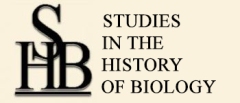Рихтер Яков Андреевич
Саратовский государственный университет, Саратов, Россия;
Глебов Михаил П.
Независимый исследователь, Санкт-Петербург, Россия
Рихтер Татьяна Я.
Независимый исследователь, Филадельфия, США.
DOI: 10.24411/2076-8176-2018-11975
Название «Маленькие ботаники» исторически закрепилось за содружеством молодых людей, начинавших свой путь в науке после окончания Санкт-Петербургского университета в конце XIX — начале XX столетий. Зарождение кружка пришлось на начало бурного и плодотворного развития ботанической науки в России. В это время В.В. Докучаевым и А.Н. Бекетовым были предприняты широкие почвенно-географические и геоботанические исследования в различных регионах европейской России. Собрания кружка были неофициальными и неформальными, в отличие от заседаний старших коллег, членов Ботанического отделения Императорского Санкт-Петербургского общества естествоиспытателей — профессоров университета и членов Императорской Академии наук. Многие из них сделали здесь свои первые шаги и впоследствии стали крупными учёными и научными деятелями. Назовём лишь некоторых, наиболее известных: А.Н. Краснов, Г.И. Танфильев, С.Г. Навашин, В.Л. Комаров, С.П. Костычев, А.А. Рихтер, Н.А. Максимов, Б.Л. Исаченко, В.Н. Сукачев, Д.И. Ивановский, М.С. Цвет. Их объединение взаимодействовало на протяжении почти двух десятилетий и включало представителей нескольких поколений. Благодаря им в российской биологии появились и стали развиваться новые направления, в том числе экспериментальное — при изучении жизненных процессов в растениях и микроорганизмах, что в немалой степени на многие годы определило развитие ботаники и физиологии растений в России.
Ключевые слова: «Маленькие ботаники», флористика, геоботаника, биохимия, физиология растений, А.С. Фаминцын, И.П. Бородин, Д.И. Ивановский, М.С. Цвет, В.Л. Комаров, А.А. Рихтер.
The Road to the Future: the History of “The Little Botanists” Society
Ya.A. Richter
Saratov State University, Saratov, Russia;
M.P. Glebov
Independent researcher, St. Petersburg, Russia
T.Ya. Richter
Independent researcher, Philadelphia, USA
DOI: 10.24411/2076-8176-2018-11975
Historically, the term “Little Botanists” used to designate a community of the young people who had just started their scientific careers after graduation from the St. Petersburg University in the late XIX — early XX centuries. The society emerged amidst robust development of the botanical science in Russia. At that time V.V. Dokuchaev and A.N. Beketov initiated extensive soil geographic and geobotanical prospecting in various regions of European Russia. The society meetings had been unofficial and informal, unlike meetings of their senior colleagues — professors of the Imperial St. Petersburg University, members of the Botanical section of the Imperial St. Petersburg Society of Naturalists and the Imperial Academy of Sciences. Many of them made their first steps there and later on became prominent scientists. The most famous were A.N. Krasnov, G.I. Tanfiliev, S.G. Navashin, V.L. Komarov, S.P. Kostychev, A.A. Richter, N.A. Maximov, B.L. Isachenko, V.N. Sukachev, D.I. Ivanovsky, M.S. Tsvet, to name a few. Their association had been functioning for almost two decades and involved several generations of scientists. Thanks to them, new directions were established and developed in Russian biology, including experimental studies of live processes in plants and microorganisms. These new scientific approaches determined to a large extent the advances in botany and plant physiology in Russia for many decades.
Keywords: “Little Botanists”, floristics, geobotany, biochemistry, plant physiology, A.S. Famintsyn, I.P. Borodin, D.I. Ivanovsky, M.S. Tsvet, V.L. Komarov, A.A. Richter.
